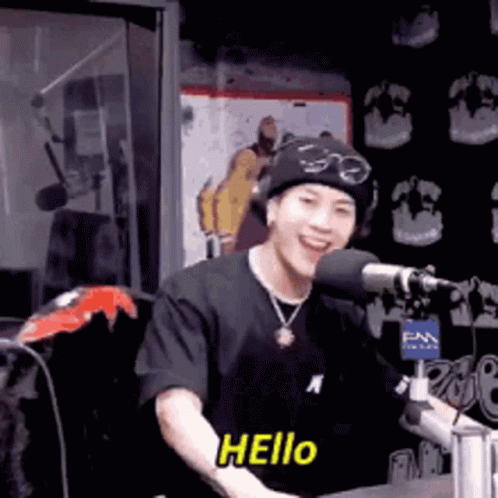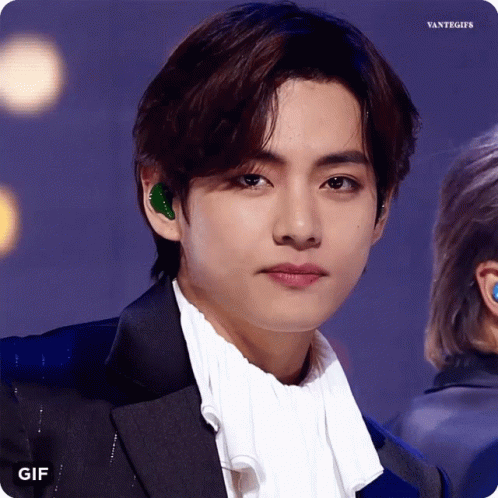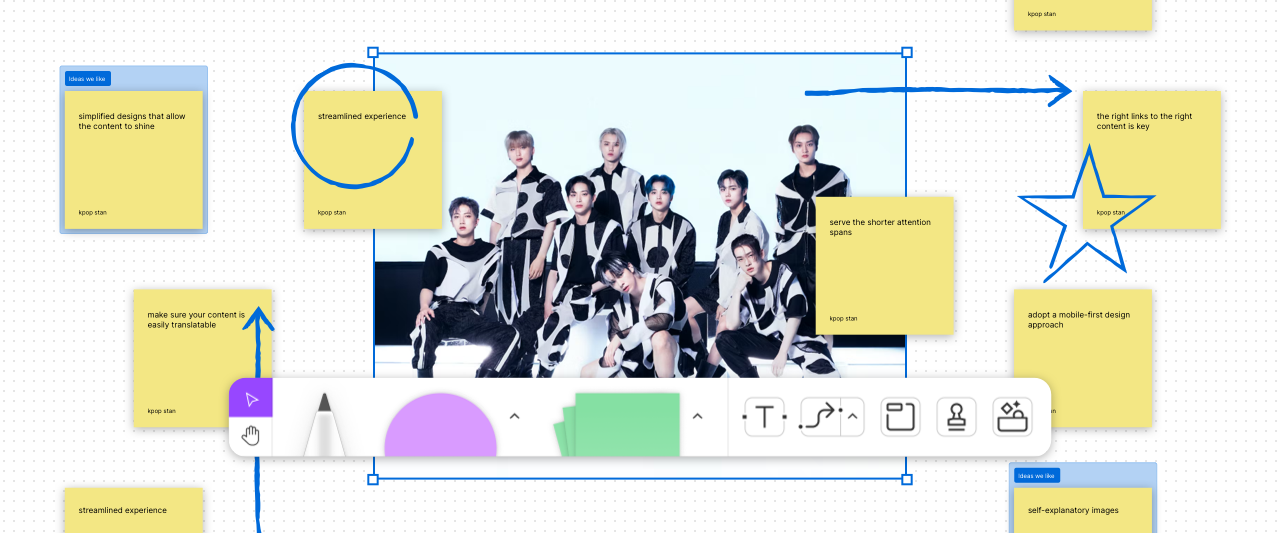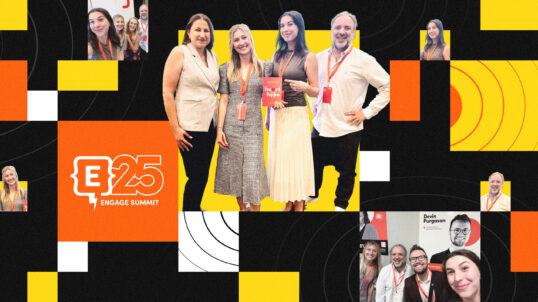We can all learn a lot from K-pop and its effect on multiple generations, how it communicates with each person, and its overall impact on marketing strategies.
K-pop and UX in Today’s Marketing
I admit it: I’m K-pop obsessed. I consider myself a baby ARMY, since there is so much to learn from the proper ARMYs out there (and the M.O.A.s, Carats, Stays or Blinks…). I’m also a passionate UX consultant, and lately I’ve noticed some similarities between the way the best K-pop bands are built and the way great UX experiences are created.
This might seem like a stretch, but I promise you K-pop has a lot to teach us about content creation, unique branding, and how to capture attention in this era. It’s been less than a year since I got hooked on K-pop and I can’t stop watching the bands’ videos, reading their interviews, listening to their music, and sharing their reactions with other ARMYs.
With over 15 years of experience in UX design and research, I believe the K-pop world has an excellent grasp of current mental models, patterns, and expectations in marketing and the businesses that they frequent.
With that in mind, here are a few core concepts that K-pop does really well that we can all use as models for good UX and content design.
1. Create Welcoming Experiences for Global Audiences
How K-pop does it: K-pop is landing in every corner of the world, even in non-Korean speaking areas. So, how does K-pop appeal to diverse audiences? The K-pop songwriters understand it’s not just about the lyrics. It’s about the melodies, branding, and the experience the audience has when listening.
A catchy melody can draw in a non-Korean speaker and a positive experience with the brand will keep them coming back. Additionally, K-pop artists often send messages to fans in multiple languages so that everyone can equally experience their brand.

How UX should do it, too: How does this reflect on the future of marketing? It shows that as a marketer, you will need to make sure your content is easily translatable and allows for cultural differences. Some of the K-pop groups will even sing some of their songs in other languages of fan favorites.
A UX designer will need to understand their audience and what they require. If it’s not translations, maybe it’s catchier self-explanatory images or universally understood GIFs to reel them into your stellar copy and, of course, simplified designs that allow the content to shine.

Our job as marketers is to get them to not only come over when they see an innovative, new application or easy-to-use website, but to keep them on the page reading our content; then coming back for our expertise again and again. Just like a K-pop song that is just so catchy it gets stuck in your head.
Quick fix: It may seem overwhelming, but something you can do now is to simply adopt a mobile-first design approach which will simplify your website design and easily allow for small changes when selecting other languages, and most importantly, ensure your content shines. And since most users are now consuming most of the content from their phone, it makes sense to prioritize this. If your mobile score is high on Google, it’ll even help your SEO too.
2. Give the Answer. Fast.
As mentioned, audiences want what they came for fast, or they’ll go to the competition to get it.
How K-pop does it: One of the main reasons K-pop is such a hit across the globe is because the writers keep the songs short, catchy, and quick to the chorus so the listener can sing along as soon as possible (even if they don’t speak the language).
In the words of Dave Grohl (not at all a K-pop star, but still), “Don’t bore us, get to the chorus.”
These hits are catchy and short to serve the shorter attention spans of younger audiences and the need for music to be on social media platforms, such as Tiktok.

How UX should do it, too: Making your site easy to use and offering immediate answers to the inquirer’s question is key to reduced bounce rates and successful customer journeys.
You can do this by writing punchy and grabby CTAs that clearly explain to your audience what they are there to do.
Instead of offering website pages with an overabundance of information, offer a streamlined experience with bullet points that tell the user where to find the answer to what they’re looking for right away. This is typically best on homepages and other high level pages. If the user wants more information, they’ll click on the links you provide and read on.
Providing the right links to the right content is key. Ensure your user is supported at each click with well-written content, working links, and easy-to-navigate pages. This allows them to get the answers they’re looking for faster, which will bring them to your call to action more efficiently:
Buy now, see pricing, learn more; making them a customer faster.
3. Create Consistent Content Across Multiple Channels
Most audiences now expect consistent, fresh content, and they expect it to be accessible across multiple platforms, such as your website, LinkedIn, Twitter, and more.
How K-pop does it: K-pop stars understand it’s not just about the music. They create an entire world to keep fans engaged and for them to enjoy. But this extra content also alleviates some of the expectation of constant music releases for the bands.
Instead of releasing a song once or twice a week, which would be exhausting and expensive for the artist and record label, the artist can post a video featuring their dance practices for the same song, what the band is up to, what they’re working on, what artists they admire, etc.
(Jimin’s, one of the BTS members, latest music video release, “Set Me Free: Pt.2” was quickly followed by the release of their choreography practice video. The views from both videos count toward the overall position in the charts for the new song.)
The possibilities are endless.
This is a great tool to keep fans engaged between releases so they’re even more excited to listen to the new cuts. This allows the bands to build hype for the new songs, so that they get immediate listens on streaming platforms when music is released. Because fans are constantly reminded of the release this helps the band’s brand and rankings amongst their competition. The more streams a song gets, the more relevant it will be, keeping the band in the spotlight.
How UX should do it, too: This continuous feed of content and music reduces the risk of releasing products that don’t work, as it is easily forgotten among content and products that are successful.
Just like with these K-pop artists, continual, quality content releases, big or small, across multiple platforms, is often the best way to gauge what your audience is looking for. Whether it’s a blog, informative video, podcast, etc., your audience will want access to new material regularly on multiple platforms.
Offering continuous content allows you to build a rapport with your audience between big changes with your company so that they’re engaging with your brand when you really need them to, helping your audience grow and your rankings rise.
4. Build Brand Loyalty with Ethical Values
More common with younger audiences, a brand’s ethics are now a selling point.
How K-pop does it: We live in a world where perfect marketing isn’t expected, but being unique, respectful, and real is essential. K-pop supports inclusivity and being true to yourself so that people of all backgrounds can come together and you have something unique to offer.
If there’s ever an issue, bands, idols, or record companies have an obligation to genuinely apologize and make a change within their brand.
For example, K-pop artists are currently being criticized for their high expectations of body image, diets, and work schedules. But the K-pop industry leaders are starting to realize the damage these excruciating requirements can do on their artists and how it can actually hurt K-pop’s reputation.
How UX should do it, too: Always aim for inclusivity! Bring in all audiences, have a diverse team, and listen to viewpoints from all backgrounds. And if you have an audience who is disappointed in how your brand handles an issue, look into why and see how you can create a more dynamic workplace, brand, or whatever the issue may be. Audiences appreciate that much more than a company ignoring the issue, or worse, claiming they’ve done nothing wrong. This builds brand loyalty and trust with your company.
Quick Fix: If you mess up, fix it! Make posts going forward about how you’ve changed and show your audience how you’ve made changes. Apologies are great, but audiences want to see authenticity and ethics.
Update Marketing for All Generations
After observing K-pop trends for some time, I’ve noticed the way we interact with organizations and brands is very similar to the way K-pop has built an empire.
Expectations for better experiences are higher now than ever, but technology and research have evolved exponentially as well. We can now identify patterns faster than ever and use the influence from outside sources, like K-pop, to our advantage.
Can our digital experiences adapt as quickly to this new generation and trends? We think these K-pop observations can help!



